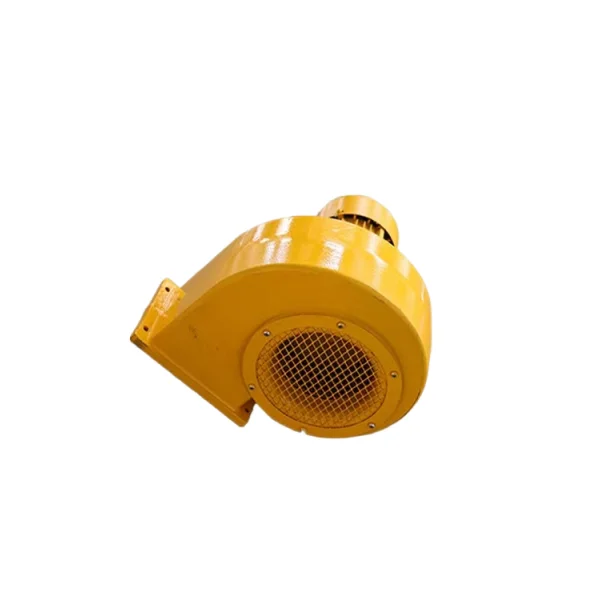In the realm of industrial automation, precision and reliability are paramount. Motion control systems depend heavily on accurate feedback regarding position, speed, and direction of mechanical components. One of the most essential devices for such feedback is the encoder sensor. Among the various manufacturers, BEI Sensors (now part of Sensata Technologies) has established itself as a prominent player in producing robust, high-performance encoders. In this blog post, ENX Enxiao, a high performance industrial encoder manufacturing company, will share the working principle of industrial encoder BEI sensor for sale.
1. Introduction to Industrial Encoders
An encoder is an electromechanical device that converts the angular position or motion of a shaft or axle to an analog or digital signal. In industrial settings, encoders are crucial for servo motor feedback, conveyor speed monitoring, robotic articulation, and many other forms of automated motion control. Encoders are generally categorized into two types: incremental and absolute.
BEI Sensors manufactures both incremental and absolute encoders, each engineered to operate reliably in harsh environments, including those with extreme temperatures, moisture, vibration, and dust.
2. Core Components of BEI Encoder Sensors
BEI encoders—like most rotary encoders—comprise the following fundamental components:
- Code disc: A rotating disc attached to the shaft, embedded with optical patterns (for optical encoders) or magnetic poles (for magnetic encoders).
- Sensing element: Either an optical sensor or a magnetic sensor that reads the changes in the disc pattern.
- Signal processing circuit: Converts the raw signals from the sensing element into usable electrical outputs.
- Output interface: Communicates the processed signals to a controller (PLC, microcontroller, or motion control unit).
3. Working Principle of BEI Incremental Encoders
3.1 Overview
Incremental encoders output a series of pulses as the shaft rotates. Each pulse represents a fixed angular movement. These pulses are used to calculate relative position, speed, and direction.
3.2 Optical Incremental Encoders
In BEI's optical incremental encoders, the operation begins with a code disc etched with alternating transparent and opaque segments, mounted on the rotating shaft. On one side of the disc, a light source (usually an LED) emits a steady beam of light. On the opposite side, a photo-detector array receives the light that passes through the transparent segments of the disc.
As the disc rotates, the alternating pattern causes the light beam to be periodically interrupted, generating a pulsed electrical signal in the photo-detector. This signal, a square wave, is then processed by internal electronics to produce:
- Channel A and Channel B: Two square wave signals that are offset by 90° (quadrature), allowing the determination of direction of rotation.
- Z-channel (Index pulse): A single pulse per revolution used for reference or homing.
3.3 Resolution and Accuracy
The resolution of an incremental encoder is determined by the number of lines on the code disc. BEI offers resolutions ranging from a few hundred pulses per revolution (PPR) to tens of thousands. High-resolution versions use interpolation techniques within the signal processor to enhance accuracy without increasing the number of physical lines on the disc.
3.4 Magnetic Incremental Encoders
In environments where dust, oil, or other contaminants are prevalent, BEI also provides magnetic incremental encoders. These use a rotating magnetized wheel and a Hall effect sensor or magneto-resistive sensor to generate pulses as the poles of the magnet pass the sensing element. Although typically less precise than optical encoders, magnetic encoders excel in durability and reliability under extreme conditions.

4. Working Principle of BEI Absolute Encoders
4.1 Absolute Position Encoding
Unlike incremental encoders, absolute encoders provide a unique code or "word" for every shaft position, making them ideal for systems that require precise position tracking even after power loss.
BEI absolute encoders use either optical or magnetic sensing principles. The optical version utilizes a code disc with multiple concentric tracks, each representing a bit in the binary or Gray code output. The combination of light passing through these tracks is detected and interpreted to give a unique digital value for each shaft position.
4.2 Single-turn vs Multi-turn
BEI offers both single-turn and multi-turn absolute encoders:
- Single-turn encoders track position over one revolution. Once the shaft completes 360°, the position code resets.
- Multi-turn encoders use additional gear mechanisms or battery-powered counters to track the number of revolutions, providing a vastly extended position range.
4.3 Digital Communication Protocols
To integrate seamlessly with industrial control systems, BEI absolute encoders support various communication protocols, including:
- SSI (Synchronous Serial Interface)
- CANopen
- PROFIBUS
- EtherCAT
- Modbus
These interfaces allow high-speed, noise-immune, and deterministic communication between the encoder and the motion controller.
5. Signal Conditioning and Output
Both incremental and absolute BEI encoders feature advanced signal conditioning circuitry. This includes:
- Line drivers (RS422 or TTL): Ensuring robust transmission over long distances.
- Noise filtering: To minimize electromagnetic interference (EMI).
- Fault detection: Some models feature diagnostics to monitor power, signal integrity, and sensor alignment.
For incremental encoders, output pulse frequency is directly proportional to the rotational speed, enabling real-time speed control. In contrast, absolute encoders output a static digital value representing the current position.
6. Environmental Robustness
One of BEI Sensors' distinguishing features is its focus on rugged design. Many models are rated to IP66 or IP67 standards and include features such as:
- Sealed housings to prevent ingress of dust and water
- Temperature-hardened components for operation from -40°C to +100°C
- Shock and vibration resistance for mobile and heavy machinery applications
- Explosion-proof models for hazardous environments (e.g., oil & gas)
7. Applications of BEI Encoder Sensors
BEI encoders are deployed across a wide range of industries:
- Aerospace: Position tracking in actuation systems
- Automotive manufacturing: Robotic arm control and conveyor feedback
- Material handling: Speed monitoring of conveyors and cranes
- Oil & Gas: Rotary positioning in drilling equipment
- Medical devices: Precision feedback in imaging systems
8. Conclusion
The working principle of industrial BEI encoder sensors, while rooted in classical electromechanical design, incorporates cutting-edge signal processing and ruggedization to meet modern industrial demands. Whether optical or magnetic, incremental or absolute, these encoders provide the precision and durability necessary for mission-critical applications. By understanding the internal mechanisms and signal behaviors, engineers can better select and deploy BEI encoders to maximize performance and reliability in their control systems.
www.enxsensors.com
ENX Enxiao


